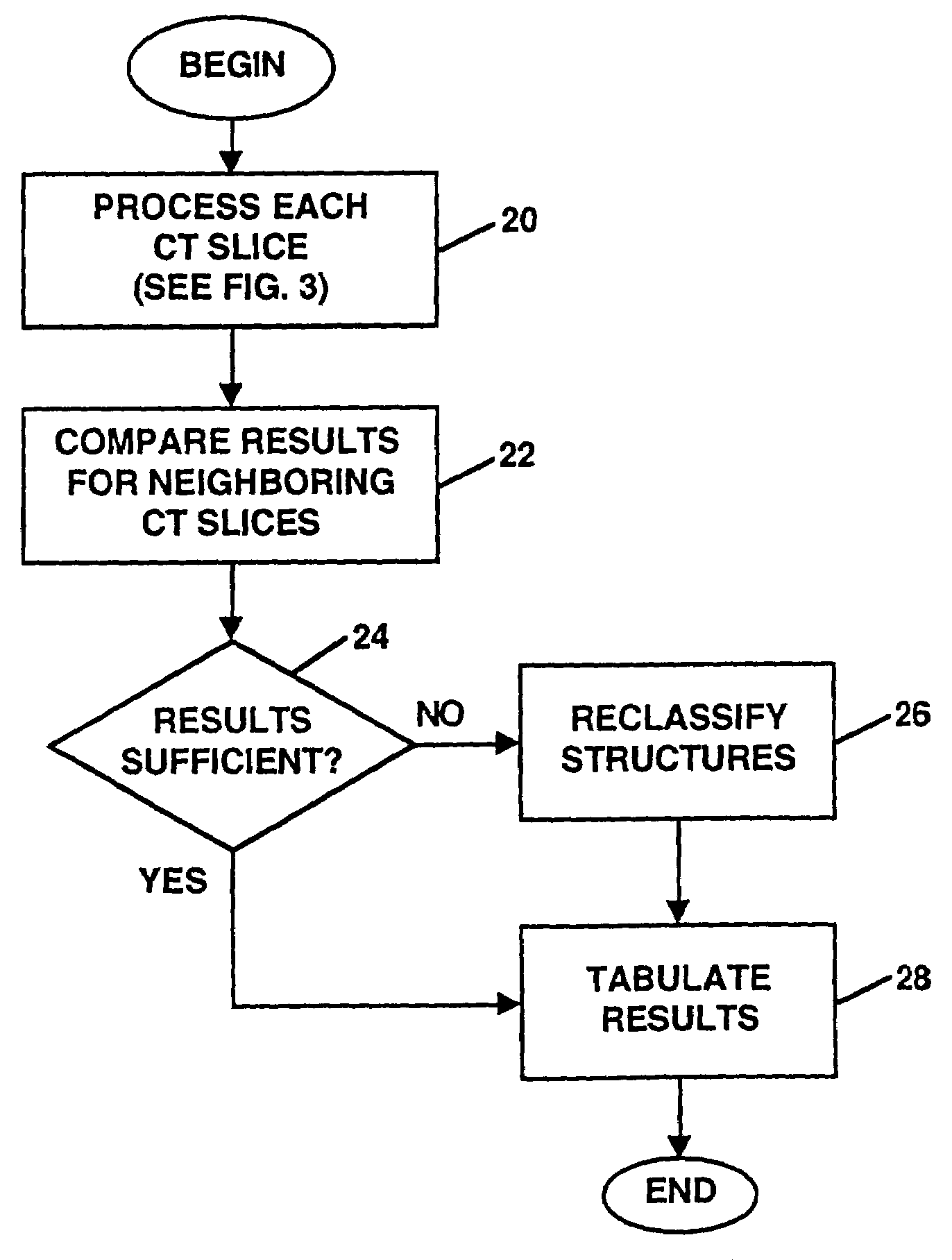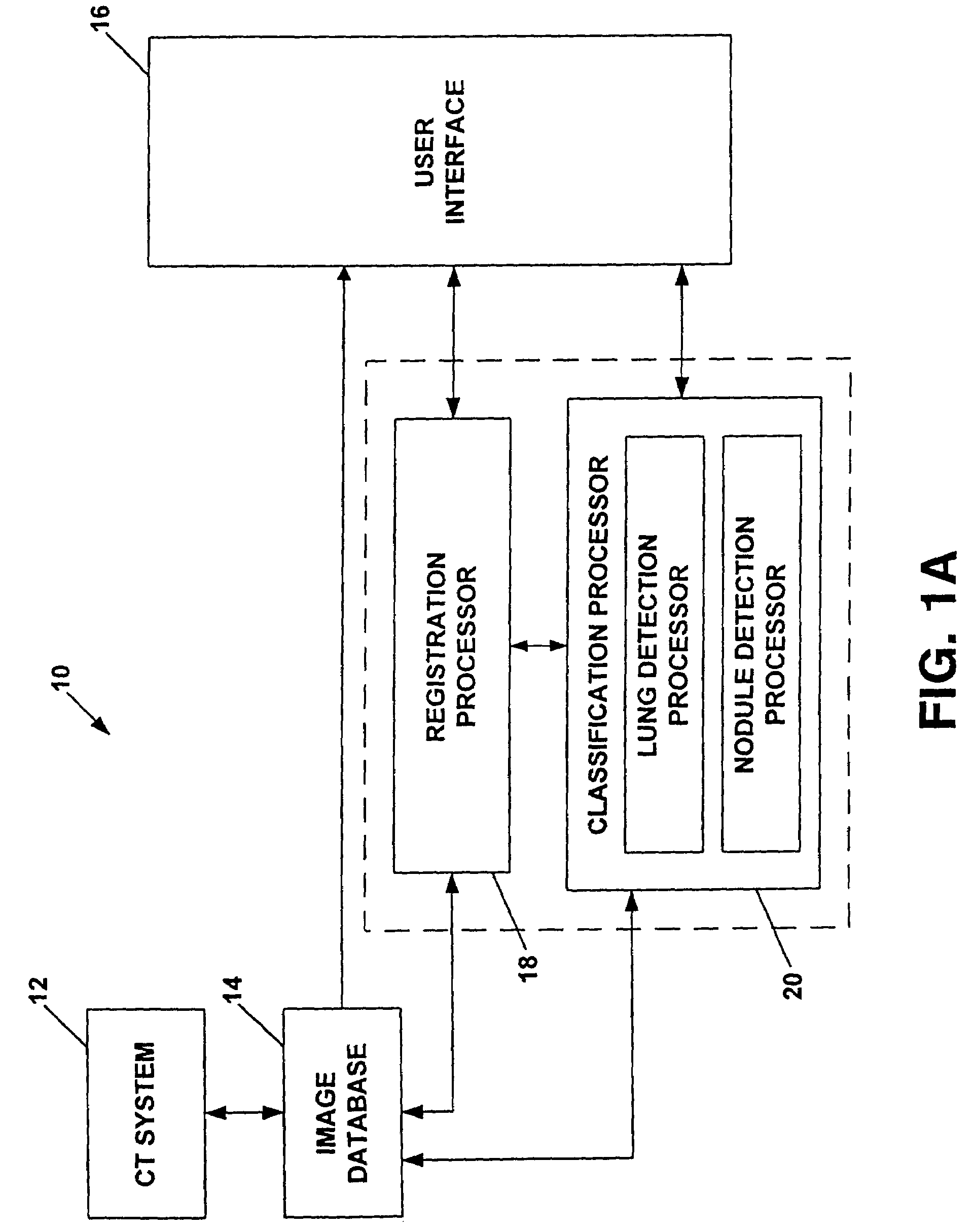Method and system for the detection, comparison and volumetric quantification of pulmonary nodules on medical computed tomography scans
a computed tomography and volumetric technology, applied in the direction of material analysis using wave/particle radiation, instruments, nuclear engineering, etc., can solve the problems of time-consuming and tedious manual detection, time-consuming and human error-prone assessment of change on sequential chest cts, and none of the prior art registration approaches have compared two different ct studies of the chest to automatically, so as to reduce human error, reduce time spent reviewing images, and rapid and accurate quantitate tumor load
- Summary
- Abstract
- Description
- Claims
- Application Information
AI Technical Summary
Benefits of technology
Problems solved by technology
Method used
Image
Examples
Embodiment Construction
[0066]Before describing a system for the detection, comparison and volumetric quantification of pulmonary nodules on medical computed tomography scans and the techniques required to performed such operations some introductory concepts and terminology are explained.
[0067]A computed tomography (CT) system generates signals which can be stored as a matrix or array of digital values in a storage device of a computer or other digital processing device. Each of the numbers in the array correspond to a digital word (e.g. an eight-bit binary value) typically referred to as a “picture element” or a “pixel” or as “image data.” The array of digital values can be combined to display an image. Conversely, an image may be divided into a two dimensional array of pixels with each of the pixels represented by a digital word. Thus, a pixel represents a single sample which is located at specific spatial coordinates in the image.
[0068]The signals generated by the CT system are used to provide so-called...
PUM
 Login to View More
Login to View More Abstract
Description
Claims
Application Information
 Login to View More
Login to View More - R&D
- Intellectual Property
- Life Sciences
- Materials
- Tech Scout
- Unparalleled Data Quality
- Higher Quality Content
- 60% Fewer Hallucinations
Browse by: Latest US Patents, China's latest patents, Technical Efficacy Thesaurus, Application Domain, Technology Topic, Popular Technical Reports.
© 2025 PatSnap. All rights reserved.Legal|Privacy policy|Modern Slavery Act Transparency Statement|Sitemap|About US| Contact US: help@patsnap.com



